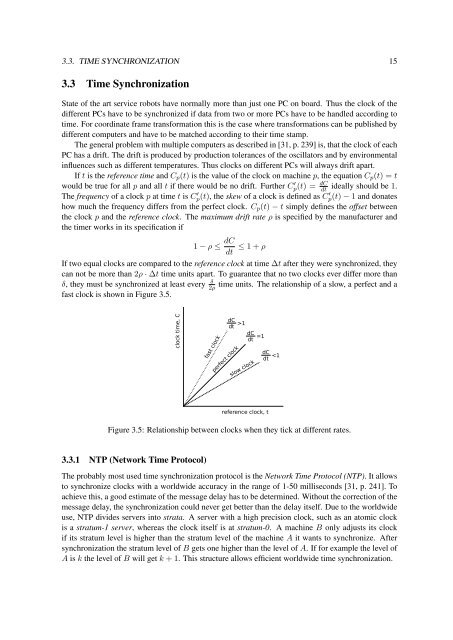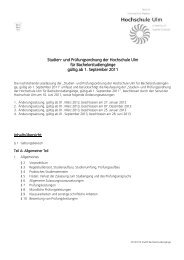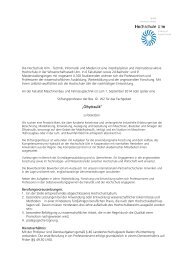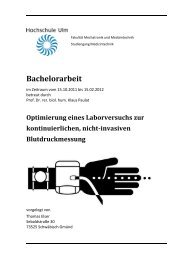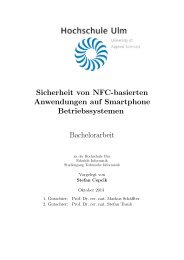PDF 1.938kB
PDF 1.938kB
PDF 1.938kB
Create successful ePaper yourself
Turn your PDF publications into a flip-book with our unique Google optimized e-Paper software.
3.3. TIME SYNCHRONIZATION 15<br />
3.3 Time Synchronization<br />
State of the art service robots have normally more than just one PC on board. Thus the clock of the<br />
different PCs have to be synchronized if data from two or more PCs have to be handled according to<br />
time. For coordinate frame transformation this is the case where transformations can be published by<br />
different computers and have to be matched according to their time stamp.<br />
The general problem with multiple computers as described in [31, p. 239] is, that the clock of each<br />
PC has a drift. The drift is produced by production tolerances of the oscillators and by environmental<br />
influences such as different temperatures. Thus clocks on different PCs will always drift apart.<br />
If t is the reference time and C p (t) is the value of the clock on machine p, the equation C p (t) = t<br />
would be true for all p and all t if there would be no drift. Further C p(t) ′ = dC<br />
dt<br />
ideally should be 1.<br />
The frequency of a clock p at time t is C p(t), ′ the skew of a clock is defined as C p(t) ′ − 1 and donates<br />
how much the frequency differs from the perfect clock. C p (t) − t simply defines the offset between<br />
the clock p and the reference clock. The maximum drift rate ρ is specified by the manufacturer and<br />
the timer works in its specification if<br />
1 − ρ ≤ dC<br />
dt ≤ 1 + ρ<br />
If two equal clocks are compared to the reference clock at time ∆t after they were synchronized, they<br />
can not be more than 2ρ · ∆t time units apart. To guarantee that no two clocks ever differ more than<br />
δ, they must be synchronized at least every δ<br />
2ρ<br />
time units. The relationship of a slow, a perfect and a<br />
fast clock is shown in Figure 3.5.<br />
clock time, C<br />
fast clock<br />
dC<br />
dt >1 dC<br />
perfect clock<br />
slow clock<br />
dt =1 dC<br />
dt


